
Related
Topics
Guests
- Constance Malcolmmother of Ramarley Graham.
- Royce Russellattorney for Ramarley Graham’s family.
- Carlton Berkleyformer NYPD detective.
We continue our coverage of the killing of Ramarley Graham, the 18-year-old shot dead by a New York City police officer in his own bathroom in February. We’re joined by Ramarley’s mother, Constance Malcolm; her attorney, Royce Russell; and Carlton Berkley, a close friend of the Graham family and a former NYPD detective. “Ramarley was just a loving person. He [would] help anybody,” Malcolm says. “It seems like we’re not safe anywhere. If you’re not safe in your own home, where are you safe?” [includes rush transcript]
Transcript
AMY GOODMAN: We continue our coverage on the death of Ramarley Graham, the 18-year-old shot dead by a New York police officer in his own home on February 2nd. Yesterday, Democracy Now!'s Juan González and I sat down with Ramarley's mother, Constance Malcolm; also the lawyer for the Graham family, Royce Russell; and Carlton Berkley, known as Chucky, a close friend of the Graham family, a former New York police detective on the force for 20 years. I began by asking Constance Malcolm what happened to her son on the day he was shot dead.
CONSTANCE MALCOLM: I wasn’t there. I was on my way from work, and I got a phone call. And the person said to me, am I home? And I said, “No, I’m on my way from work.” He says, “There’s a whole bunch of cops in the backyard.” I said, “OK, I’m on my way.” Later, like a couple of minutes, I’m calling back, I’m not getting the same person that called me. So after I finally got him now, he said, “Just hurry up and come.” I’m like, “OK.” At this time, my son was dead, but he didn’t want to tell me. So when I got there, the block was cordoned off. A whole bunch of cops was there. I went to them, and I told them who I was. I told them—I said, “I live here.” I gave them my ID. It was like about five different cops that came up to me. “Wait. Wait. Wait.” Finally, one came and said I had to go to the precinct with him. I said, “Fine,” because I didn’t know what was going on. I didn’t know the procedure. I said, “Fine, I’ll go with him.”
I got up to the precinct with them. They took me upstairs. It’s like where they do their investigation. There was a bench in the hallway. He said to me, the officer that took me to the precinct, “Can you sit right here and wait for me?” while he proceeded to go over to the—there’s a little half-a-counter type thing, to speak to somebody behind there, and he went to introduce himself to the police officer behind the half-a-counter. And he said—told me his name. I can’t remember his name. But then he said, “I’m coming from the homicide.” And that’s how I found out actually that my son was dead.
AMY GOODMAN: Did he tell you Ramarley is dead?
CONSTANCE MALCOLM: No, he was talking to another police officer. He told me to sit in the hallway and wait. And that’s how I found, when he said, “I’m just coming from the homicide.”
JUAN GONZÁLEZ: And did they, at any point during that day, tell you anything about what had happened?
CONSTANCE MALCOLM: No. They were so busy telling me I have to sit in the hallway, and finally here come my mom. They ushered her in. And she said to me, because my mom call me “Little Miss,” she said, “Little Miss, they killed Marley.” And at that time, it’s like I froze. I didn’t know what happened after that.
JUAN GONZÁLEZ: And how did the incident between him and the police begin, from what you can tell from what they’ve claimed so far.
ROYCE RUSSELL: It’s my understanding, because Ramarley is not here, and he cannot tell us exactly what happened, and we have to read between the lines—as you see in the media, one story went out immediately: Ramarley Graham was running, they were chasing after him. And then, lo and behold, when we have surveillance that shows that he wasn’t running, then it becomes a different story.
AMY GOODMAN: What do you mean surveillance?
ROYCE RUSSELL: Well, it just so happened that the two-family home for which Constance live in, she’s a tenant there, and the owner of the home had security cameras outside of her place of residence. So, those security cameras showed Ramarley walking to his door, walking to his apartment, oblivious of anything else that was going on around him, casually taking out his keys, casually opening up the door, and casually walking in.
So, as many times before history has shown us, as soon as there is a police shooting where there is probably misconduct on the police part, there is what I call a character assassination of the victim. You hear about the person’s background. You hear about—they may have domestic problems, how dysfunctional their family is. You hear an array of things that really try to diminish the character of the deceased. And in this case, you heard the same. You heard about Ramarley’s background, which it really wasn’t any, but you heard about his background. You heard that he was running, and then you find out later on that he was not running. And I still haven’t seen a full retraction of that by the commissioner or by anybody else to say, “You know what? We got the facts wrong. He wasn’t running. We’re going to investigate.” What we heard is just a kind of bumbling over, a kind of stomping—stomping through what they said to kind of move on to the next issue.
AMY GOODMAN: So, as you understand it, he uses the key to go in the bottom—the first floor of the house.
ROYCE RUSSELL: Right.
AMY GOODMAN: You all—he lives on the second floor.
ROYCE RUSSELL: Correct.
AMY GOODMAN: So he walks up the stairs.
ROYCE RUSSELL: Right.
AMY GOODMAN: And then what happens?
ROYCE RUSSELL: Well, from the video, from which you can see, is that minutes go by. Minutes. And I’m not an expert in police protocol, but we have one here. He’ll tell you what should have been done. I’m going to surmise, during my years of experience of practicing in this area, that when you have minutes go by, you call for emergency service unit, so they can come in backup, right? And they can assess the situation. But they don’t do that. They—the video shows, and everybody has seen, how this police officer is trying to bang down this door, unsuccessfully, banging and banging, kicking, kicking, stomping, trying to get the door open. Finally, they succeed in getting the door open, my understanding, from around the back. They enter that apartment, guns blazing, startling that family, because they didn’t realize—
AMY GOODMAN: You mean guns drawn.
ROYCE RUSSELL: Guns drawn. Didn’t realize that it was a two-story family house, that one family lived downstairs and another family lived upstairs. So, guns out, questioning those people, and then to find out that it was another apartment. Still time to wait, assess: “What are we doing? Maybe we need to have backup.” And even if you take their theory that Ramarley had a gun, which we know is not true—there is no gun, there was never no gun, and there will never be a gun—but if you were to take that thinking and just take it a step further, why would you charge up the stairs and try to kick down that door down with somebody who has a gun there?
AMY GOODMAN: So—
JUAN GONZÁLEZ: And this is, just to be clear, kicking down a door with no indication that there is any crime in progress or anything of that nature. We’re talking basically, without a warrant, just kicking down the door.
ROYCE RUSSELL: It’s a violation, clearly, clearly a violation.
AMY GOODMAN: And then they go upstairs. And what happens?
ROYCE RUSSELL: And they go upstairs, and they kick that door down. And that’s—
AMY GOODMAN: Where the grandma was—
ROYCE RUSSELL: —where—
AMY GOODMAN: —where your six-year-old son was, as well as Ramarley, who’s 18.
ROYCE RUSSELL: Right. And then, to Ramarley’s demise, he’s shot fatally one time in the body.
AMY GOODMAN: In the bathroom.
ROYCE RUSSELL: That’s right.
AMY GOODMAN: Carlton Berkley, how did you come onto the scene? And then, what did you see?
CARLTON BERKLEY: As I came into the house, I interviewed witnesses myself and ascertained the same thing that Royce was saying. But the first door that—and I believe it was a sergeant—the first door that Ramarley had entered to enter the residence, a sergeant came running and tried to kick that door in. That’s the first door. Officer Haste had went around the back, and he was checking out the back, and for about—minutes went by, about a good six, seven minutes. Now, being an experienced detective, you would know that, right then and there, you’re not going to go inside, because you can’t go inside. There was no hot pursuit. Hot pursuit stops when the doors close. If the door was open, you can pursue. The law says that, and that’s what they taught us in the academy. But they also say, once the door closes, you back up, and now you, you know, ascertain the facts, huddle, if you’re going to get a search warrant or if you’re going to let the situation go away.
AMY GOODMAN: Police claim that they shoot Ramarley as he is flushing a baggie of marijuana down the toilet?
CARLTON BERKLEY: OK, well, being a retired detective, right, I’m—who’s to say that that’s what Ramarley was doing? I believe—I believe there wasn’t any marijuana. You know, there’s—you’ve got to remember, this is a narcotics unit. It’s called SNEU, Street Narcotics Enforcement Unit. Sometimes as a narcotics officer, sometimes we would have narcotics on us, which we take off of suspects. Who’s to say that somebody didn’t have a bag of weed and threw that down to try to justify them breaking in or, again, right, to victimize the victim again with this is—this is what he was doing?
JUAN GONZÁLEZ: And even by the police version, as I understand it, Haste, after shooting Ramarley Graham, then yells, “Gun!” that he yells after the fact, after he shot him?
CARLTON BERKLEY: Well, from what I heard, some people said that he didn’t hear “gun” — they never heard “gun.” But police are told that when you mess something up, you’ve got to cover it up. So now when you have some time to think about it, you’re going to put your story together which coincides with what you was taught in the academy. And it’s always, “Yes, that’s the first thing I said, was 'police,' you know, 'put your hands up.'” You know, from what we understand, Haste says, “Show me your hands.” In the academy, you’re not taught, “Show me your hands.” In the academy, you’re taught to “Put your hands up.” So, I don’t know where he got his training from. And then to come to find out, he had no training for narcotics, none at all, so he shouldn’t have been in that unit. The only way he got in that unit was either through a favor from somebody, or he knew somebody.
AMY GOODMAN: So, Constance Graham, Officer Haste was charged with first- and second-degree manslaughter. What is your reaction?
CONSTANCE MALCOLM: I thought he should have been charged with murder, because that’s how I see fit for him, because manslaughter—I just think it was murder, very simply. You can’t just kick somebody’s door in and go in and murder somebody and get a charge for manslaughter. It was so much other charges they could have charged him with, but they decided not to.
AMY GOODMAN: Chuck Berkley, you’ve arrested a lot of people over your 20-year history as a New York narcotics detective. There were a number of police officers involved with this. What happens when you would go after a group of people?
CARLTON BERKLEY Well, usually, the whole unit—in this particular case, I was expecting that that whole unit, right, would have been taken off the street, immediately.
AMY GOODMAN: That was there at the house that night—
CARLTON BERKLEY Right, if you go back—
AMY GOODMAN: —that day. What time was it, by the way?
CARLTON BERKLEY It was in the evening, like I think 3:30, around that time. But usually, you have a whole module. When something goes wrong with that module, from the highest-ranking officer to the officers, everyone is taken off the street immediately. In this case, that didn’t happen. People were still allowed to go on, right, with their routine activities. So that kind of—it kind of surprised me, because we all know that—being in the police department for over 20 years, being a member of the 100 Blacks in Law Enforcement Who Care, the National Latino Officers, we all said at times that if we had a black unit or a Hispanic unit that would have did something like this in a different neighborhood, you can rest assured all of us would have been taken off the street right away. This didn’t happen.
Let me just say something else. The statute, right, of burglary, right, is you have any intent to break in someone’s house, right? The statute states that in the commission of a burglary—a felony, right? In the commission of a felony, you cause the death of someone, an innocent person, you have to be charged with felony murder, right? Have you ever heard of anyone killing a cop and getting charged with manslaughter? You know? So, are we saying that cops are treated much differently from the average citizen? Something is wrong with that.
AMY GOODMAN: You’ve coined a new term, talking—you were just talking about if someone is a cop killer, what would happen to them.
CARLTON BERKLEY Well, we need to treat cops that kill people unjustifiably the same as cop killers. So, you know, killer cops need to be treated as cop killers.
AMY GOODMAN: Constance Malcolm, can you talk about who Ramarley was, your 18-year-old son?
CONSTANCE MALCOLM: Ramarley was a fun-loving child. He loved his brother, his sister. Him and his sister, when they was younger, I used to dress them alike, so people would think they’re twins, because they’re only a couple of years apart.
AMY GOODMAN: This is Leona.
CONSTANCE MALCOLM: Leona, yeah. So, you know, him and her was—they was close. They was close. You might not see them much outside, but when they was younger, because my daughter played basketball. She used to always take him to the court to play. Ramarley was never a basketball person. He didn’t like the roughness. So he would just sit on the sideline. They always tease him that he don’t want to play ball. He loves to listen to music, R&B, because a lot of times when a lot of songs comes out—because I listen to mostly R&B. Like, for instance, when Alicia Keys first came out, “Fallin’,” he’s the one that told me about it. Karyn White, “Witness in Me,” he’s the one that told me about it. So he likes music. He likes to exercise with his little brother, Chinnor. You know, they used to do push-ups together. And Chinnor would love that. He takes Chinnor to go to school. He picks him up sometimes. You know, Marley was just a loving person. He will help anybody. He will have his [inaudible] and give it to anybody. That’s just who he was. And that’s how I grew all my kids, to respect people and to, you know, respect people in the way you want to be respected. He was just a loving kid.
JUAN GONZÁLEZ: And in terms of this whole issue that we’ve been discussing, the march on Sunday, stop-and-frisk, had he had problems in the past of being stopped by police, as well as many teenagers and other young folks around the city have had numerous situations where they’re just stopped on the street by police?
ROYCE RUSSELL: Well, let me answer that question, in that, as you see, from commentary, from those that you ask, “Have you ever been stopped and frisked before?” it’s probably highly unusual that you can grow up in New York City, African American or Latino, and walk the face of this earth, to and from school, in Bronx County, Kings County, Queens, Manhattan, and not be a subject of a stop-and-frisk, which we all know that doesn’t mean you were doing something wrong, but be subject to a stop-and-frisk. I wish Ramarley was here to maybe tell us the stories of when he was stopped and frisked, if he was stopped and frisked, because we know oftentimes that many kids don’t even reveal that to their parents. It’s become such the norm that they don’t even come home and say, “Hey, Ma, you know what? Today a police officer pulled me over and went through my bag.” It is a norm. And part of what I do, not only practicing law in this area, is do seminars to tell kids, “It is not the norm. Don’t think that this is the way life is supposed to be, that you walk out your house, you walk down the block, and somebody’s supposed to say, 'Hey, let me see your ID.' You haven’t done anything.”
AMY GOODMAN: Or walk down the corridor of your school.
ROYCE RUSSELL: Or walk down the corridor of your school, wherever it may be. So, we answer that question in that it’s a high probability. It happens to me.
AMY GOODMAN: Was he stopped earlier that day?
ROYCE RUSSELL: No, he was not.
AMY GOODMAN: And so, what are you calling for now? Are you calling for other officers, the sergeant who was on the scene, for others to be charged, as well? And also, just one quick comment. You talked about other high-profile cases. Between the time that Ramarley was killed and Officer Haste was indicted, the Trayvon Martin case happened.
ROYCE RUSSELL: Right. And I think that shed a national light on what I call the errors of law enforcement. And I’ve said this before. In the Trayvon Martin case, you had someone who idolized law enforcement or who maybe wanted to be a law enforcement officer. And when you make the analogy that children learn from their parents, right, they learn from people of authority—they learn what to do and what not to do, how to sit properly at the table, how to conduct themselves when they’re out at dinner, use your library voice, don’t use your loud voice when you’re out at the restaurant. When you look at cases like Ramarley Graham, Sean Bell, Baez, Amadou Diallo, when someone who idolizes to be law enforcement, and they see how law enforcement treats people of color, how could you not have a case like Trayvon Martin? It seems like it’s so within the norm, right? Someone that’s going to brutalize someone of color because they think they’re in a position of authority and a position of law enforcement. So I think that tragedy brought light to a situation nationally, because what brought light to Trayvon Martin is that we dealt with citizens. See, had it been police officers, I don’t think it would have gotten the sensationalization that it did. See, it dealt with citizens—but a citizen who wanted to be part of law enforcement, so you see how it groups and it comes together when you look at Ramarley Graham.
AMY GOODMAN: How is Chinnor, Constance, your little boy?
CONSTANCE MALCOLM: Chinnor is not doing so good. He thinks all cops are bad, so I have to sit there every day and try to tell him not all cops are bad. You are bad when you see bad things going on, and then you don’t try to correct it.
AMY GOODMAN: A lot of young—a lot of parents, African-American and Latino parents, have to warn their kids about going outside.
CONSTANCE MALCOLM: Unfortunately.
AMY GOODMAN: Your child was killed inside, in his own apartment. What message do you have today?
CONSTANCE MALCOLM: It seems like we’re not safe anywhere. If you’re not safe in your own home, where are you safe? This is becoming so widespread about—with the police. You know, you could just stop a person outside. OK, fine, it’s not right, but when you run into somebody’s house and violate their house like that, how could people trust you? You’re supposed to protect them. That’s what you’re paid for. And for you to do this—it’s hard. And the community is very upset right now. I don’t know how can they fix that.
AMY GOODMAN: Constance Malcolm, the mother of Ramarley Graham. He was killed by New York police on February 2nd, 2012, in his own apartment, his family’s apartment, in his own bathroom. We were also speaking with the family lawyer, Royce Russell, and Carlton Berkley, known as Chucky, a close friend of the Graham family, a former New York police detective. He was with the department for more than 20 years.
This is Democracy Now!, democracynow.org, The War and Peace Report. When we come back, we go back to the Father’s Day march of Sunday, where thousands marched down Fifth Avenue to the home of New York City Mayor Michael Bloomberg, protesting the police practice known as stop-and-frisk. Stay with us.


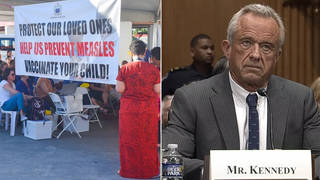
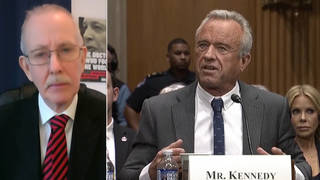
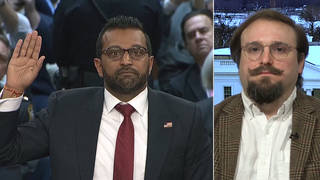
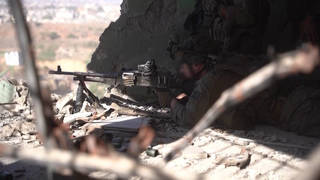




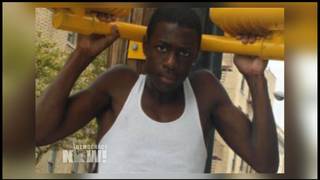

Media Options